Bekal Fort
A spectacular coastline, unending thickets of coconut palms, a hinterland with rocky outcrops along the beach...the 17th century Bekal Fort sits comfortably in a movie setting like surreal environment. Yes, Bekal Fort and its environs is a popular movie shooting location as well!
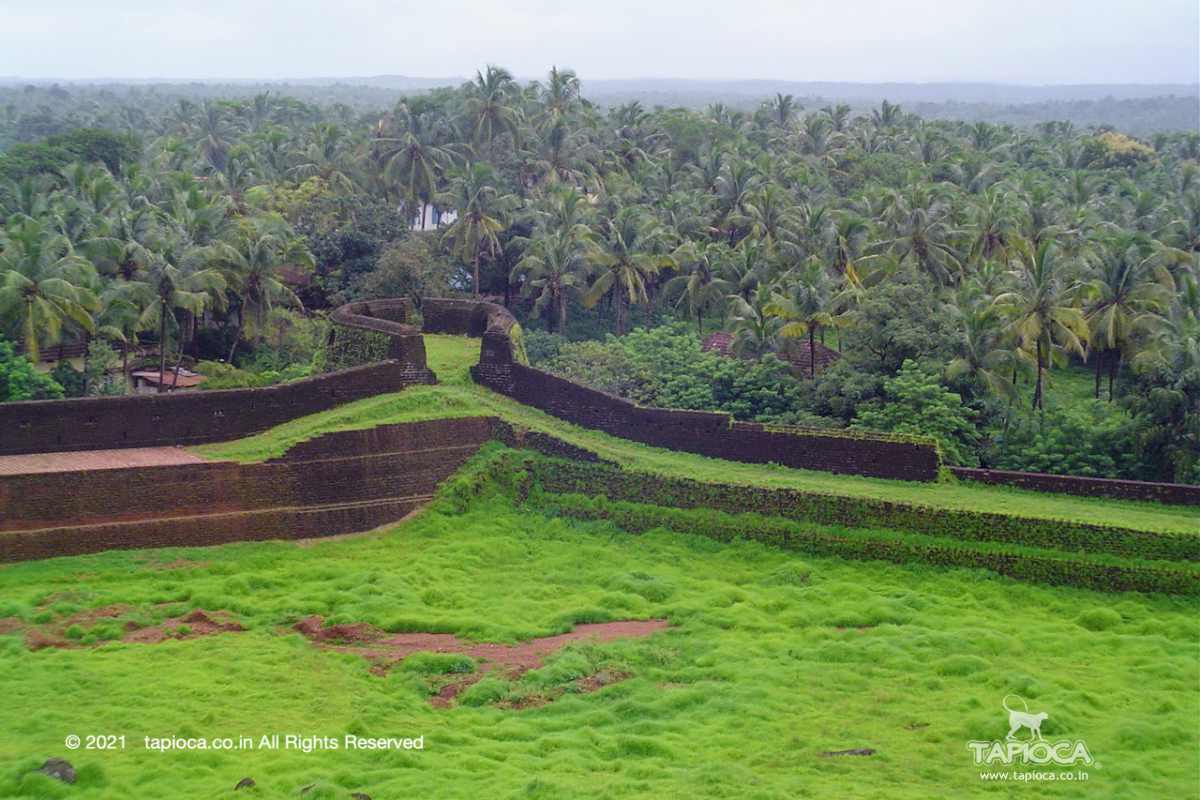
Bekal
View of Bekal beach from the Bekal Fort
C
overing about 40 acres (1,62,000 sq. meters), Bekal Fort is the the largest and the best preserved fort in Kerala. Bekal represents the marquee tourist destination of the Malabar region, Bekal Fort its iconic landmark.The origin of this fort is sketchy. Most likely it was a small stronghold built by the local chieftains. Many additions and expansions were added over period by different powers who dominated the area for many centuries.
Construction of the 300 years old Bekal Fort, in the present form is attributed to the Shivappa Nayaka of Bednore. The region came under the influence of the Keladi kings post fall of the Vijayanagara Empire ( 1336-1646 CE), that ruled most of the peninsular India.
From Keladi kings the fort came under Tipu Sultan, who expanded his influence from Mysore.
A massive observation post, the
The Fourth Anglo-Mysore war saw the fall and death of Tipu Sultan in 1799.Bekal fort became an important military stronghold for the maritime interests of the East India Company.
Laterite Bekal fort is built of an exotic natural material: Laterite. This rusty-iron looking material is abundant in this part of Kerala. Freshly quarried laterite blocks (bricks) are pale orange in colour, and quite soft to work with. However, once quarried and exposed to elements, the weathering hardens it. The older it gets, the harder it becomes.
The whole Bekal Fort is masonry built with laterite blocks cut in shape.
Bollywood fame
The 1995 Mani Ratnam, classic movie 'Bombay' added an enigmatic aura to Bekal as a shooting location. The visuals of the song 'Uyire Uyire' (Tu hi re , the Hindi version ) in this movie was shot in Bekal Fort and on the rocky outcrops projecting to the sea below the fort.
Bus loads of tourists followed to retrace those locations in Bekal. For many more films, albums and commercials Bekal Fort and its environs became a fantastic backdrop.
Seaside Circular Bastion: Bekal Fort has a couple of seaside bastions. Do not miss the one on the northwest part of the fort. Stands detached from the enveloping fort wall, this is built on the rocky formation on the thin strip of land between the sea and the fort.
There is an opening on the western wall leads to a trail to this bastion. A 5-10 minutes trek will take you to the circular bastion. The intimidating waves hit the rock and water splashes raise many feets above the bastion wall, while you can stand behind the safety of the laterite bastion wall.Be prepared to get drenched. Taking camera is recommended for great photo opportunity, though you need to extra careful with the splashing water.
Tail Piece: Though it's much smaller and with less fanfare compared to Bekal Fort, Chandragiri Fort located 10 km (6.2 miles), north of Bekal fort gives you the best panoramic view than the Bekal Fort.
Get to the National Highway 66 from Bekal. Drive north towards Kasaragod. In about 9km, you'll reach the Melparamba junction on the highway. Take the left of the y-fork. Chandragiri Fort is a 1km detour from the highway.
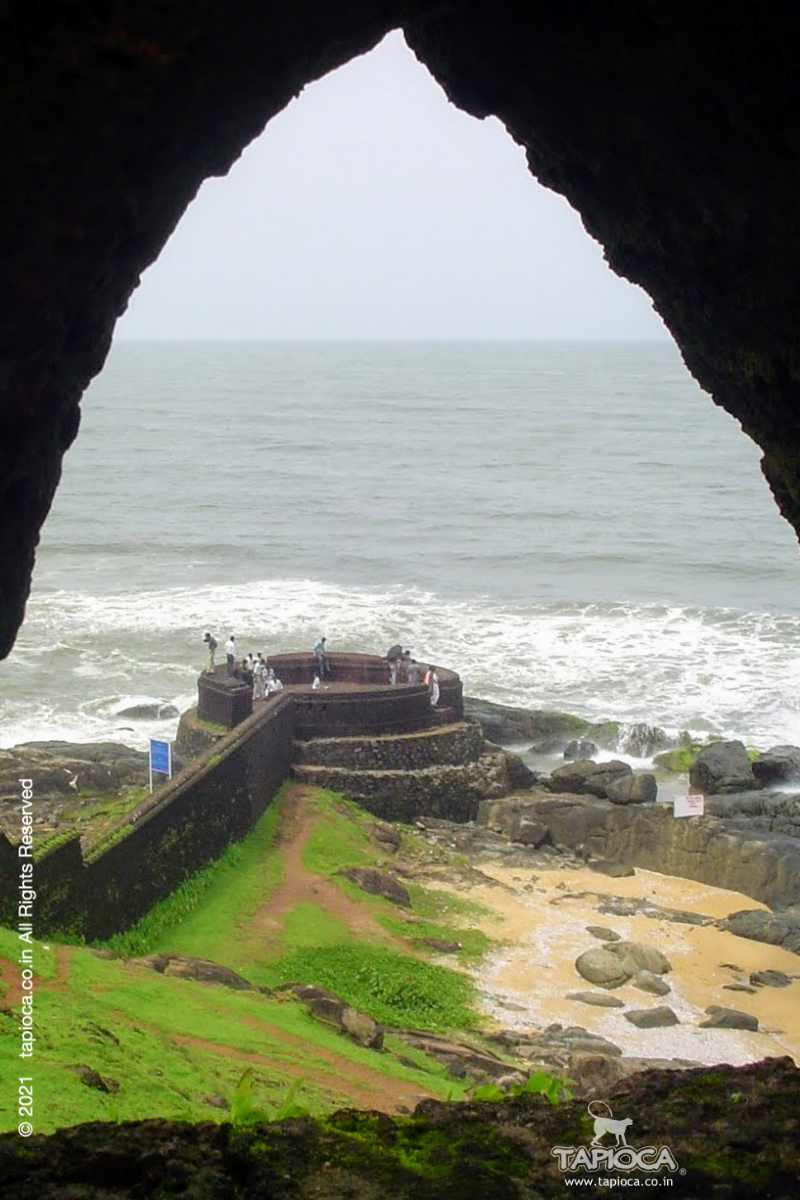
Bekal
The extended circular bastion and its connecting wall to the fort seen through an arch window on the fort wall.
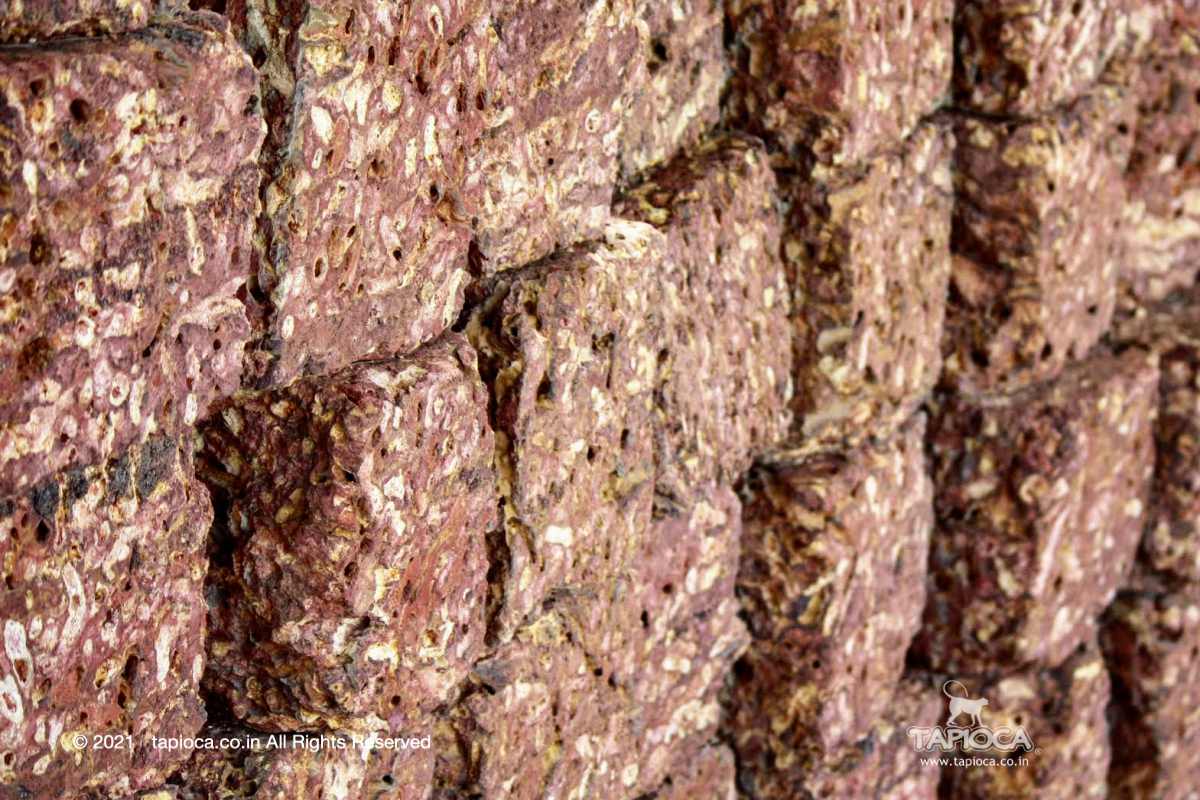
Laterite
Laterite is a popular building material used in states like Goa, Kerala and Karnataka .
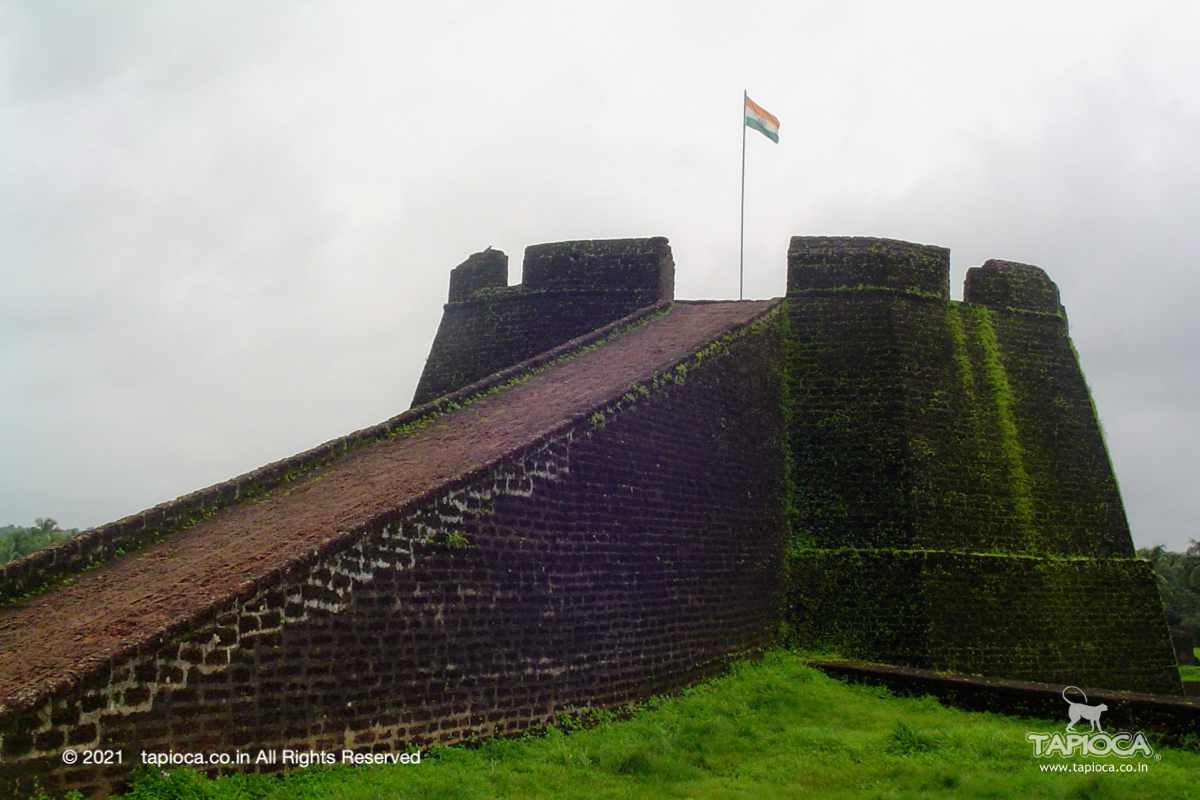
Bekal
A climb to the top offers a great view of the sea, over the fort walls.
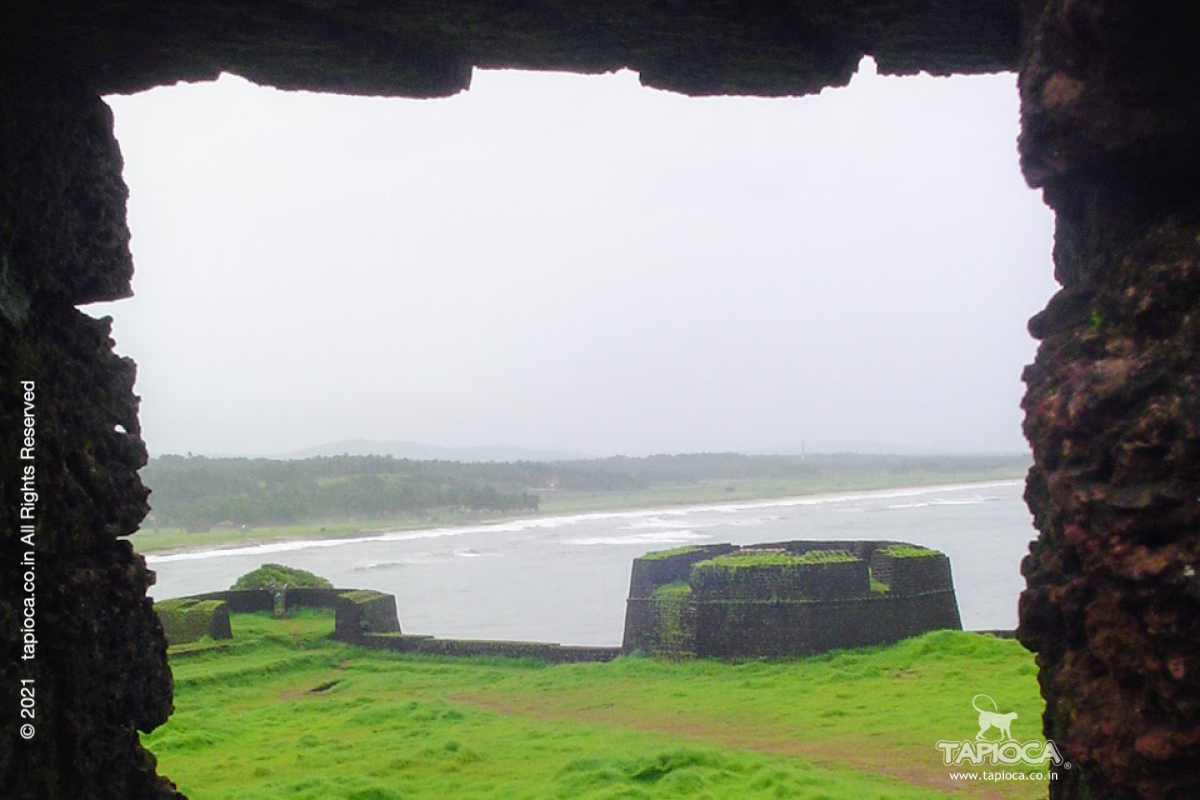
Bekal
The opening in the laterite fort wall.

Bekal
Trail outside the Bekal Fort. Beach is beyond the coconut palms.
